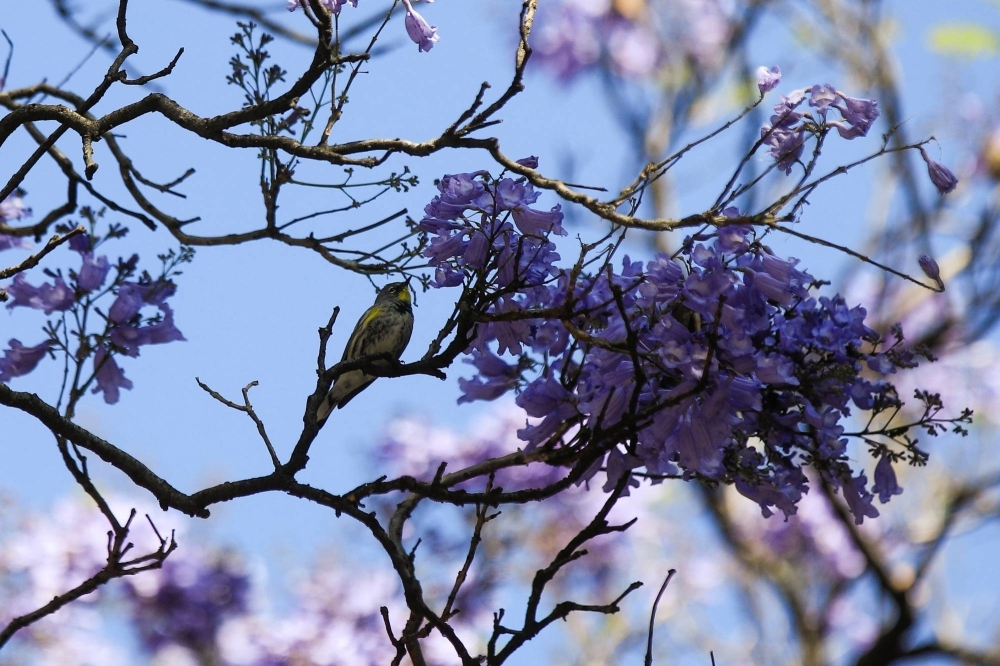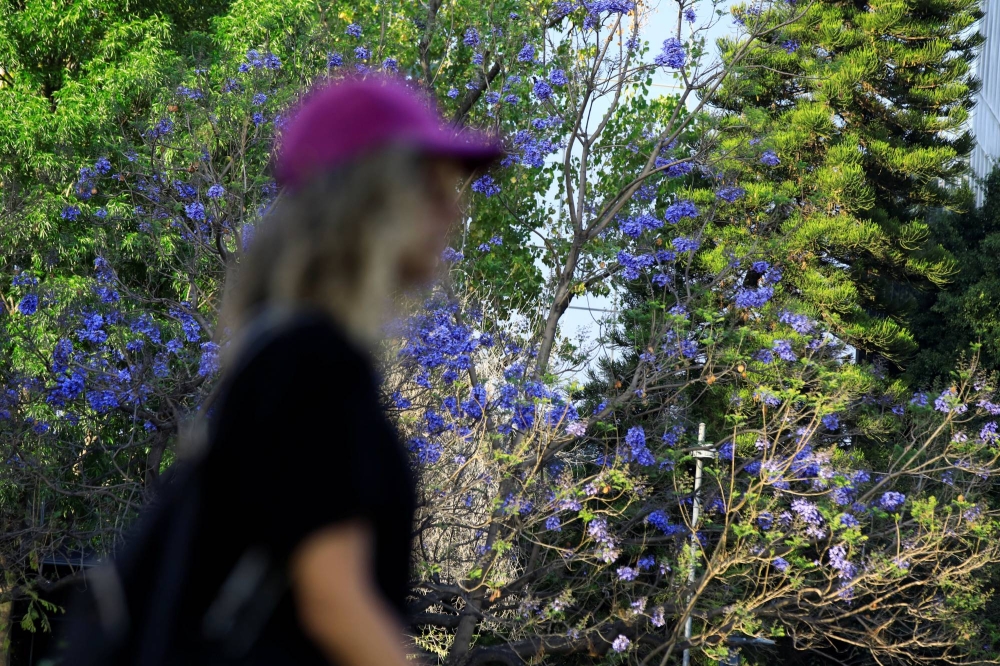Every spring, the streets of Mexico’s capital are painted purple with the flowering of thousands of jacaranda trees. Their spectacular colors not only attract the eyes of residents and tourists, but also birds, bees and butterflies that find food and shelter in them.
But this year something changed.
Some jacarandas began blooming in early January, when they normally awaken in spring. The early onset bloom has set off alarm bells among residents and scientists in Mexico City, where the trees have become an iconic, photogenic mainstay of city streets.
Local scientists have begun investigating how widespread the early-bloom phenomenon is, but they point to climate change as the first culprit.
“We’ve always seen the jacaranda beginning to bloom towards the end of March, in spring, when we see the flowers change to violet,” said Constantino Gonzalez, a researcher at the Institute of Atmospheric Sciences and Climate Change Research at the National Autonomous University of Mexico.
“They are starting to flower in January, February, which is winter, when it is not yet their time,” said the biologist of 48 years.

A bird rests on the branch of a jacaranda tree in Mexico City on Feb. 19.
| REUTERS
Gonzalez explained that in order to draw a correlation between climate change and the early flowering of jacarandas his team needs a representative sample and compare blooms year to year. To do this, he has started to lead a group of young people who are collecting data throughout the city and using satellite imagery.
He noted rising temperatures caused winter in the Mexican capital to end early this year, in mid-January, instead of late March when it is supposed to end.
Adaptation
Enthralled by the Japanese cherry trees that cover Washington in pink and white every spring, Mexican President Pascual Ortiz — who served between 1930 and 1932 — set out to replicate the same landscape in his nation’s capital.
But Tatsugoro Matsumoto, a Japanese landscape architect who settled in Mexico in the late 19th century, told him they would not survive the city’s temperate climate for long, so he advocated for jacarandas, a tropical tree he had learnt about during a brief stay in Peru.
Since then, the tree has become a staple for Mexico City’s nine million inhabitants.
In January alarm spread when users on social networks started to publish photos of flowering jacarandas and began to wonder about the effects of climate change.
“Like never before (…) people have started to say ‘this is serious, it’s real’ and it’s no longer just a polar bear floating adrift,'” said Cristina Ayala, biologist and doctor in Sustainability Sciences.
“It is very good that people are beginning to become aware of what climate change is going to bring to us as urbanites,” she added.
Although they are not native to Mexico, for Ayala, jacarandas fulfill an important function for the city. They attract more hummingbirds and bees than many native trees, so a change in flowering could lead to a decrease in these populations.
“One would like the jacarandas to bloom all year round, they brighten the city,” said Alex Estrada, a resident of the Mexican capital, while observing a tree that was beginning to turn purple.
“But something is not right here: jacarandas in winter?” he said.

